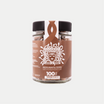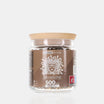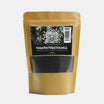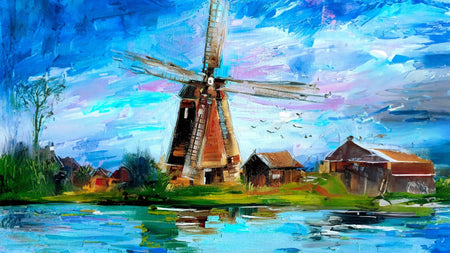The colorful history of the joint - a journey to the beginning
What does the term “joint” mean?
The word “joint” originally comes from French and means “joint”. By 1877, this term had already developed into a slogan in the American construction industry. In 1935, this was then used to describe hypodermic needles, which were mainly used to inject heroin and opium. In 1938, the first recorded use of the term “joint” for a marijuana cigarette in the USA. This development is probably due to the slang language of the time. Nowadays it goes by many names, this is partly for discretion and is, among other things, very locally dependent. The most common European variant is the “Spliff”. This term has been around since 1936 and refers to a “cigarette” partially filled with cannabis. However, its origin is completely unknown.
Cannabis was smoked before the first joints even existed
Back then, the joint was not one of the original methods of cannabis consumption. History tells us that marijuana was primarily smoked in (water) pipes.
As early as 2700 B.C. Cannabis was used as medicine all over the world in the 4th century BC.

Asia and Africa
The use of marijuana as a medicine in China can be traced back to 200 AD. The use of hashish was already being discussed in Arabia around 1200 AD. Marco Polo reported assassins using hashish, and there were pipes containing cannabis in Ethiopia as early as the 14th century.

India
It is likely that people in India lived as early as 2000 BC. have used and consumed cannabis. It is often associated with the deity Shiva and is still part of religious ceremonies today.

Ancient Greece
Despite reports from writers and historians that date the recreational use of cannabis to 500 B.C. Dating back to around 1000 BC, the ancient Greeks valued hemp primarily for its medicinal effects. This was already grown for this purpose back then.

America and Europe
Hemp plantations spread across America and Europe in the 18th and 19th centuries. It is unclear how much of the cannabis grown at the time was used recreationally, but there are records showing that Napoleonic soldiers used marijuana in Egypt and brought it back to France.
History lesson: So when was the first "joint" smoked?
Of course, this question cannot be answered specifically. The history of the first joint can be traced back to around the 1850s in Mexico. A scientist at the University of Guadalajara discovered that rural workers were mixing marijuana with tobacco in their cigarettes and smoking them. At the same time, the Boston Medical and Surgical Journal suggested a cannabis treatment for breathing problems. It was thought that a combination of cannabis, belladonna, belladonna and potassium nitrate could both relieve asthma attacks and improve oxygen absorption. The medicinal plant cannabis became known as a pain reliever and as a recreational drug.
"Prohibition in the United States was enshrined in the 18th Amendment to the U.S. Constitution and prohibits the manufacture, transportation, import, export and sale of alcohol. This measure was introduced on January 29, 1919 and was intended to curb crime and corruption ."
This ban on alcohol in the United States in 1919 led to increased use of cannabis. It became socially acceptable - even more so:
In New Orleans it became fashionable to enjoy a "jazz cigar" at concerts and similar events. Still legal at the time, smoking (indica) cannabis spread like wildfire and became increasingly popular. It was particularly popular for its calming and sense-sharpening effects. A new attitude to life took hold. As a consumer you were no longer looked at askance.
Decades later, in the 1960s, cannabis consumption became illegal and hippies made the joint what it still is today - a colorful symbol of freedom and peace.
But what is meant by a hippie and how did this time permanently change the reputation of the joint?
A hippie, according to the original definition of the word, was a person who belonged to the rebellious culture in America in the 1960s. They consisted mainly of young people and the term spread around the world after America. It encompasses a broader community of people across the globe. Above all, it represents an ethic, an identity and a belief that contradicts the establishment. The typical hippie style was characterized by long hair, colorful clothing, a spirit of freedom and smoking marijuana.
This all grew steadily, perhaps culminating at the Woodstock Music Festival in 1969. The artists united with the audience and created a strong anti-establishment movement. The sound back then was breathtaking, the drugs were strong and probably the sex was outstanding too. Richie Havens, who introduced the Woodstock festival, announced: “Woodstock is not just about sex, drugs and rock 'n' roll. "It should above all be about spirituality, love, sharing, mutual support and a life in peace and harmony."
The joint has always been cast in a new light, as the influence of this movement was huge and absolutely formative. It was a sign of resistance, unity and freedom.
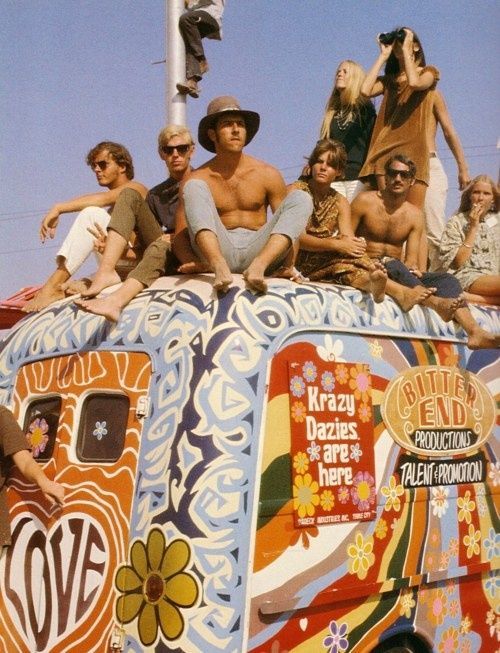
Where do we find the joint these days?
The story moves on. Slowly but surely we came closer to legalization again. Since the beginning of 2018, purchase and consumption has been legal again in some US states such as California, Maine, Nevada and Massachusetts. Other countries are also following suit and slowly easing the harsh regulations regarding marijuana consumption. Germany is also moving in this direction with some concept proposals. But where did the change and the renewed salon appeal of the topic come from? The answer is social pressure. Much of the symbolism of freedom has been lost, but today it is still about the feeling of belonging. Mediated through music and film. The story of cannabis continues!
Cannabis joints in today's pop culture
From the Beatles to Snoop Dogg - cannabis has long been mentioned in music. For example, Paul McCartney's 1966 song "Got to Get You into My Life" is not, as is often assumed, about a romantic relationship. It's about cannabis, which he discovered at that time. There is hardly an American artist left who completely misses cannabis in his lyrics. Mainly in the hip-hop or stoner genre, “smoking weed until the doctor comes” plays a central role. Reggae should of course also be mentioned here - this style of music is considered a kind of symbolic character for the entire cannabis legalization movement. There's hardly a music video that doesn't involve smoking a joint. Of course, this contributes in some ways to the portrayal of cannabis today. Artists who are particularly known today for their pro-cannabis stance include:
Many other musicians also report a stimulating, sensory-expanding effect of cannabis intoxication, which can have an inspiring effect on artistic creation.
Cannabis joints in today's pop culture
Cannabis has had an established role in the Hollywood film industry for several decades. There are countless films that focus on the culture, use or consequences of cannabis consumption. Some of these works have caused a sensation in the past and are now cult films. Examples of this are films like:
This list could probably go on forever. From humorous portrayals of "stoner" culture to more serious examinations of the effects of cannabis on the lives of the protagonists - the variety is great. They can also convey social or political messages related to the topic of cannabis, such as the legalization of cannabis or discrimination against cannabis users. They also play a large part in the fact that the use of marijuana can now be discussed more openly again and that many countries are moving towards legalization.
So cultural history comes to a temporary end and is just waiting to be continued.

Frequently asked questions about the history of the joint
According to historical records, the first joint was probably smoked in the 19th century. However, cannabis use dates back far beyond that, with commercial hemp fiber dating back to 4000 B.C. BC were found in modern Iran and Iraq.
It is difficult to say where the first joint was smoked , as cannabis was used in various ancient cultures around the world. However, many believe that the first documented use of cannabis as a psychoactive substance in ritual worship occurred in ancient Chinese cultures.
The exact identity of who smoked the first joint is unknown. Historical texts from ancient Chinese cultures indicate that cannabis was used in ritual practices, so it is likely that both priests and laypeople smoked it.
The term “joint” is actually a derivative of the French word “joindre,” which means “to join” or “to unite.” Originally the term referred to any type of two things put together. In the context of cannabis, a joint refers to rolling marijuana in paper to create a smokable cigarette.
Joints have been widely used both medically and recreationally over the years. In the early 20th century, however, increasing concerns about drug abuse led to the criminalization of cannabis in many parts of the world. However, recently the joint has made a comeback due to the legalization of medical and recreational cannabis in many countries.










